Best Practices for Tilling Garden Soil: Boost Your Garden’s Vitality
- June 17, 2024
- 0 comment
Explore the best practices for tilling garden soil to enhance your garden’s vitality. Perfect your technique for thriving plants. Ready to transform your garden? It all begins with the soil! Master the art of soil tilling with our expert guide, designed to enhance the vitality of your garden.
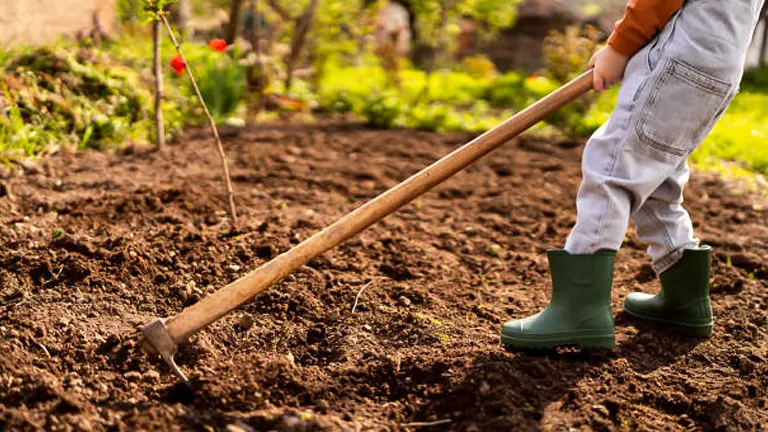
Discover key techniques that unlock the full potential of your soil, setting the stage for lush growth and vibrant plant life. Let’s dig into the secrets of effective soil preparation.
Table of Contents
- The Science Behind Tilling Garden Soil
- When to Till Your Garden
- Choosing the Right Tilling Equipment
- Best Practices for Tilling Garden Soil
- Common Mistakes to Avoid While Tilling
- Post-Tilling Soil Care
- Advanced Tilling Techniques
- Conclusion
- FAQs
The Science Behind Tilling Garden Soil
Soil Structure and Tilling Impact
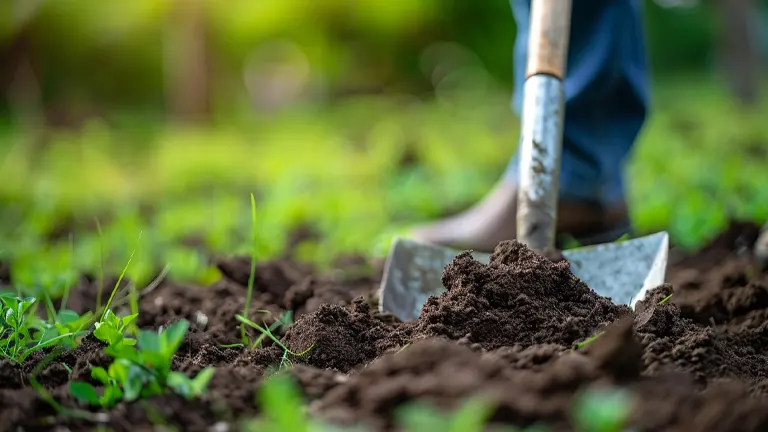
Soil structure is critical for plant health as it influences the root development and the water-nutrient exchange necessary for plant growth. Tilling, the process of mechanically turning the soil, significantly modifies this structure. By breaking up and aerating the soil, tilling enhances the pore spaces between soil particles. This increase in porosity improves oxygen infiltration and water drainage, facilitating robust root systems.
Tilling also plays a pivotal role in integrating organic matter into the soil. When organic materials such as compost, manure, or green waste are evenly dispersed by tilling, they decompose more efficiently. This decomposition process is crucial as it releases nutrients like nitrogen, phosphorus, and potassium, which are essential for plant vitality.
Quantitative Analysis of Tilling Effects
The benefits of tilling are often quantifiable. Research indicates that well-tilled soil can improve water infiltration rates by up to 50% compared to compacted soil. This is particularly beneficial in areas prone to heavy rainfall, where improved drainage can prevent waterlogging and associated root diseases.
Additionally, the introduction of organic matter through tilling can increase the soil’s nutrient-holding capacity. For instance, the carbon-to-nitrogen ratio (Cratio) of the soil, a key indicator of nutrient availability, can be optimized by incorporating the right type of organic amendments. A balanced Cratio (ideally between 20:1 and 30:1) ensures that microorganisms have enough nitrogen to decompose the carbon-rich materials without depleting the soil’s nitrogen available to plants.
Impact of Tilling on Soil Properties
| Soil Property | Impact of Tilling | Quantitative Benefit |
|---|---|---|
| Water Infiltration | Increases by up to 50% | Prevents waterlogging, enhances drainage |
| Aeration | Improves oxygen availability | Supports aerobic soil microbes |
| Nutrient Distribution | Enhances through decomposition | Increases nutrient availability to plants |
| Soil Compaction | Reduces, especially in clay soils | Facilitates deeper root growth |
| Moisture Retention | Improved in sandy soils | Prevents over-drainage, conserves water |
Scientific Considerations for Different Soil Types
The effect of tilling varies with soil composition. In clay-heavy soils, tilling can break up dense clods, reduce surface crusting, and improve root penetration. For sandy soils, where the risk of rapid drainage and nutrient leaching is higher, tilling can enhance moisture retention by incorporating organic matter that retains water more effectively.
However, it’s important to note that excessive tilling can disrupt soil biota and lead to a decrease in organic matter over time. Advanced tilling practices, such as conservation tillage or no-till farming, aim to balance the physical benefits of traditional tilling with the need to protect and enhance soil life and organic content.
When to Till Your Garden
Understanding the Optimal Timing for Tilling
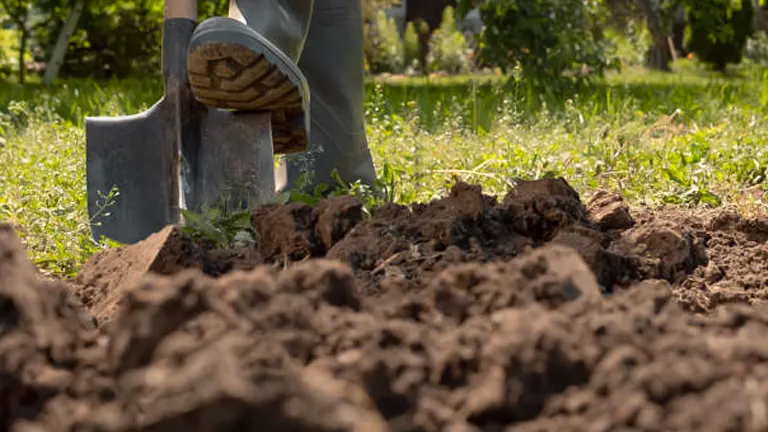
The timing of tilling is crucial to its success and can significantly affect soil health and plant growth. The two primary periods recommended for tilling are early spring and late autumn, each serving a distinct purpose:
- Spring Tilling: Conducted as the soil warms, spring tilling is crucial for preparing planting beds. It helps in warming the soil faster, which is essential for the germination of many spring crops. During this time, the soil is also more receptive to incorporating organic amendments, which can decompose sufficiently before peak growing season.
- Autumn Tilling: This tilling is done after the harvest and involves incorporating organic materials like fallen leaves, compost, or green manures. These amendments have all winter to break down, thanks to microbial activity, which enriches the soil with nutrients by the time spring arrives.
Seasonal Benefits of Tilling
| Season | Benefits of Tilling | Recommended Actions |
|---|---|---|
| Spring | Prepares beds, warms soil, integrates amendments | Incorporate compost, adjust pH, plant cover crops |
| Autumn | Enriches soil, decomposes organic matter | Add leaves, compost, green manure |
Assessing Soil Conditions and Needs
Before deciding to till, it’s imperative to assess the physical condition of your garden’s soil:
- Soil Texture and Moisture: Soil that forms dense clumps or feels heavy might be clay-rich and prone to waterlogging. Such soil greatly benefits from tilling, which can enhance its drainage and aeration. Conversely, if the soil crumbles readily and doesn’t hold shape, it may have sufficient aeration already and require minimal tilling.
- Soil Health Monitoring: Frequent tilling can disturb soil biota and lead to a decline in organic matter. It’s essential to monitor the soil’s health through periodic testing to determine if tilling is necessary. Over-tilling can disrupt the delicate balance of microorganisms essential for a healthy soil ecosystem.
Strategic Tilling for New and Established Gardens
- New Gardens: Tilling can be particularly beneficial in new garden areas by removing existing vegetation, which competes with garden plants for nutrients and water. It also helps in shaping the garden layout and establishing initial nutrient foundations.
- Established Gardens: In gardens that have seen several seasons, tilling can help break up soil compaction that accumulates over time, rejuvenate the soil, and incorporate fresh nutrients from added organic matter.
Considerations for Conservation
While tilling has many benefits, it’s also important to consider conservation tilling practices in established gardens to protect soil structure and microbial life. Techniques such as reduced-till or no-till can be alternated with traditional tilling methods to maintain soil health over longer periods.
Choosing the Right Tilling Equipment

Selecting the appropriate tilling equipment is crucial for optimal soil management and ensuring the health of your garden. The choice between manual and mechanical tillers depends on several factors including the size of your garden, the type of soil, and your personal capacity for physical labor.
Types of Tillers Explained
- Manual Tillers: These are hand-operated and ideal for smaller or more precise gardening tasks. Manual tillers, such as hand trowels and claw tillers, allow for meticulous control, making them perfect for working around delicate plants and in tightly spaced gardens. They are also beneficial for minimizing soil disturbance, preserving soil structure and microbial integrity.
- Mechanical Tillers: Designed for larger spaces, mechanical tillers can significantly reduce physical exertion and time spent tilling. These include:
- Rotary Tillers: Equipped with rotating blades, or tines, which penetrate and turn the soil. They are excellent for mixing organic matter into the soil and breaking up dense soil. Rotary tillers are effective at incorporating amendments deep into the soil profile, which is crucial for nutrient distribution.
- Vertical Tillers (Verticutters): These tillers cut into the soil vertically, making them less disruptive to soil structure. They create narrow channels that improve water and nutrient penetration and are especially effective in preventing soil compaction, promoting root growth and aeration.
Factors to Consider
When choosing a tiller, several factors should be considered to ensure it meets your gardening needs:
- Garden Size: The size of your garden largely dictates the type of tiller you should choose. Larger gardens require the efficiency and power of mechanical tillers, while smaller plots are better suited to the control offered by manual tillers.
- Soil Type: The composition of your soil can affect which tiller will perform best. Clay-heavy soils might benefit from the robust action of rotary tillers, which can break up dense materials and reduce compaction. For sandy or loamy soils, a verticutter might be preferable as it avoids excessive disturbance while improving aeration.
- User Capability: Always consider your physical ability to handle the equipment. Mechanical tillers are heavier and generally more physically demanding, although they do more of the work for you. Manual tillers, while less physically demanding, require more time and manual effort.
Tiller Comparison for Garden Management
| Tiller Type | Best For | Soil Type Suitability | Physical Effort | Typical Garden Size |
|---|---|---|---|---|
| Manual Tillers | Precision, small areas | Any, best for light soils | High | Small to medium |
| Rotary Tillers | Large areas, deep tilling | Heavy soils (clay, loam) | Medium to high | Medium to large |
| Vertical Tillers | Reducing compaction, aeration | Sandy, loamy soils | Medium | Medium to large |
Best Practices for Tilling Garden Soil
Effective tilling requires more than just turning over the soil; it involves careful planning and execution to enhance the soil without causing undue stress to its structure and resident microorganisms.
1. Pre-Tilling Preparations:
- Begin by removing all surface debris such as weeds, stones, and sticks. This helps prevent any obstructions that could damage the tiller blades or hinder the tilling process. Use a rake or a hoe to clear the top layer effectively.
- Testing the soil moisture is crucial before you begin tilling. Grab a handful of soil and squeeze it. If the soil forms a ball and then crumbles when poked, it’s at the ideal moisture level for tilling. If it stays in a tight clump, it’s too wet, and if it doesn’t form a ball at all, it’s too dry.
- Use flags or spray paint to mark the boundaries of the area you plan to till. This ensures that you till only the necessary sections and protect any surrounding landscaping or structures from accidental damage.
2. Tilling Process:
- Adjust the depth of your tiller to about 6-8 inches, depending on the type of soil and the intended planting. Deeper tilling can be beneficial for heavy soils like clay, as it helps improve deeper soil structure and root penetration.
- Start tilling from one corner of the marked area and proceed in straight, parallel lines. Overlap each pass by a few inches to ensure no strip of soil is left untilled. This pattern helps achieve an even and consistent soil texture throughout the garden.
- Operate the tiller at a consistent, moderate speed. Moving too quickly can result in uneven tilling and missed spots, while too slow a pace might overly pulverize the soil, damaging its structure.
3. Post-Tilling:
- After tilling, use a garden rake to remove any remaining clumps and smooth out the soil surface. This step is crucial for preparing the seedbed and ensuring it is ready for planting or further amendment.
- If the soil appears excessively dusty or dry after tilling, apply a gentle watering across the entire tilled area. This helps settle the soil and hydrate it adequately, which is vital for the activation of soil nutrients and facilitating healthy plant growth.
- If needed, after tilling is an excellent time to add soil amendments such as compost, manure, or fertilizer. Spread these evenly over the tilled soil and use a rake to mix them into the top few inches, which helps integrate the nutrients into the soil.
4. Post-Tilling Assessment and Maintenance:
- After tilling and adding amendments, it’s a good practice to test the soil pH and nutrient levels. This can guide you in making any necessary adjustments to ensure the soil is optimally prepared for the types of plants you intend to grow.
- Consider strategies to prevent soil compaction in the future, such as adding walkways or stepping stones to high-traffic areas and avoiding unnecessary tilling in the future.
Common Mistakes to Avoid While Tilling
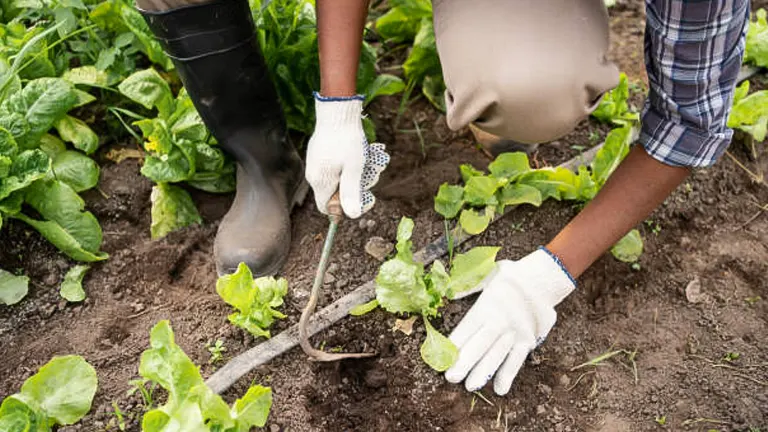
Tilling is a critical agricultural practice that, when done properly, can enhance soil aeration, improve water infiltration, and aid in nutrient recycling. However, incorrect tilling practices can degrade soil health, leading to long-term agricultural issues. Below are some common tilling mistakes, the science behind their impact, and strategies for avoidance:
1. Over-Tilling
Problem: Frequent tilling disrupts soil structure, reduces organic matter, and destroys the habitat of beneficial soil organisms such as earthworms and mycorrhizal fungi. Research indicates that continuous tilling can decrease soil organic carbon stocks by up to 21% over 25 years, severely impacting soil structure and fertility.
Solution: Minimize soil disturbance by adopting conservation tillage practices or no-till methods where feasible. Implement crop rotations to allow soil recovery and maintain ecological balance.
2. Tilling Wet Soil
Problem: Tilling when the soil is too moist can cause compaction and create large, hard clods that are difficult for roots to penetrate. A study measuring soil porosity found that tilling wet soil reduced porosity by 15-20%, negatively affecting root growth and water drainage.
Solution: Conduct the squeeze test before tilling: compress a handful of soil and release. If the soil crumbles, it is ready to till; if it holds shape or oozes water, it is too wet. Wait for drier conditions to avoid structural damage.
3. Ignoring Soil Composition
Problem: Each soil type has unique characteristics and needs specific amendments. Tilling without understanding these needs can lead to inefficient nutrient use and poor crop yields. For instance, clay soils require different management than sandy soils due to their nutrient and water retention properties.
Solution: Perform a comprehensive soil test to determine pH, nutrient levels, and organic matter content. Use these data to tailor your tilling and amendment strategy, enhancing soil health and plant growth.
4. Inadequate Equipment Adjustment
Problem: Using improperly adjusted tilling equipment can lead to uneven soil turnover, burying of crop residue too deeply, and increased fuel consumption. Optimal adjustment, tailored to soil type and condition, can reduce these issues and enhance the effectiveness of tilling.
Solution: Regularly check and adjust tilling depth and equipment settings based on soil conditions and tilling objectives. This precision approach helps in preserving soil structure and achieving better crop residue management.
Tilling Practices and Soil Health
| Common Mistake | Scientific Impact | Mitigation Strategy |
|---|---|---|
| Over-Tilling | Reduces soil organic carbon by up to 21% | Adopt conservation tillage or no-till methods |
| Tilling Wet Soil | Decreases soil porosity by 15-20% | Wait for optimal soil moisture levels (squeeze test) |
| Ignoring Soil Composition | Can lead to poor nutrient use and crop yields | Conduct soil tests and tailor amendments |
| Inadequate Equipment Adjustment | Leads to uneven soil turnover and deep residue burial | Adjust equipment settings based on soil condition |
Post-Tilling Soil Care
After tilling the soil, implementing precise care strategies is essential to optimize its condition for planting:
- Adding Amendments: Soil tests determine nutrient deficiencies and pH imbalances. To rectify these, integrate organic matter such as compost (rich in nitrogen), manure (high in phosphorus), or leaf mold (improves water retention). This amendment not only enriches the soil but also enhances its structure, making it more resilient to erosion and better at retaining moisture.
- Compost: Typically contains 0.5-3% nitrogen, 0.5-2% phosphorus, and 1-2% potassium.
- Manure: Nutrient content varies but generally includes about 0.5-1.5% nitrogen, 0.5-1% phosphorus, and 0.5-1.5% potassium.
- Leaf Mold: Rich in carbon, aiding in microbial activity and water retention.
- Leveling and Smoothing: Use a garden rake to even out the soil surface. This step is critical to break down large clumps and remove rocks or roots, ensuring a uniform bed that promotes consistent plant growth. The ideal clump size for most planting is approximately 1-2 cm in diameter, which facilitates optimal root contact with the soil.
- Moisture Management: Post-tilling, the soil may be dry. A gentle application of water (about 1-2 inches) will help integrate the amendments and settle the soil. Aim for a moisture content that reaches about 60% of the soil’s water-holding capacity to avoid compaction, which typically results after overwatering.
Advanced Tilling Techniques
For those looking to enhance their tilling practices further, consider the following advanced techniques:
- Cover Crops: Introducing cover crops such as clover (adds up to 150 kg of nitrogen per hectare) or rye (prevents nitrogen leaching and adds organic mass) protects against erosion and enhances soil organic content through decomposition. These crops also help in fixing atmospheric nitrogen, enriching the soil for the next planting cycle.
- No-Till Gardening: This method involves layering organic materials like straw, leaves, and grass clippings directly on the soil surface. Over time, these materials decompose, adding nutrients back into the soil and improving its structure without the need for mechanical disturbance. Studies have shown that no-till gardening can increase water infiltration by up to 50% and boost organic matter retention.
- Custom Approaches for Different Plants: Tailor your tilling depth according to the plant species:
- Deep-rooted vegetables (like tomatoes and carrots): Benefit from deeper tilling (up to 12 inches).
- Shallow-rooted plants (like lettuce and spinach): Require minimal tilling (about 4-6 inches).
Impact of Soil Amendments on Soil Quality
| Amendment Type | Nutrient Boost (% by weight) | Improvement in Soil Structure | Benefits |
|---|---|---|---|
| Compost | N: 0.5-3, P: 0.5-2, K: 1-2 | High | Enhances microbial activity, nutrient availability |
| Manure | N: 0.5-1.5, P: 0.5-1, K: 0.5-1.5 | Moderate | Increases organic matter, improves moisture retention |
| Leaf Mold | Low in NPK, high in carbon | High | Boosts water retention, supports beneficial microorganisms |
Related Post
- How to Build a Barn: A Step-by-Step Guide for Beginners
- How to Build a Sustainable Compost Bin: Easy and Eco-Friendly DIY
- How to Fertilize Bougainvillea: A Complete Guide for Stunning Blooms
- How to Fertilize Apple Trees: Essential Tips for a Bountiful Harvest
- How to Fertilize Lemon Trees: Secrets for Thriving Citrus
- How to Fertilize Avocado Tree: A Step-by-Step Guide for Lush Growth
- 10 Best Bow Saws to Buy in 2024: Top Picks for the Money
- Best Miter Saw For Beginners
- Top 10 Pruning Saws to Buy in 2024: Best for the Money
- 7 Best Pocket Chainsaw
Conclusion
Tilling is a powerful tool in a gardener’s arsenal to prepare the soil for planting, improve its aeration, and enhance nutrient distribution. By understanding the best practices and avoiding common pitfalls, you can ensure that your garden’s soil is in optimal condition to support healthy and vibrant plant growth. Embrace these techniques, and watch as your garden transforms into a thriving ecosystem, bursting with life and vitality.
FAQs
- What is the ideal depth for tilling garden soil?
Tilling should generally be done to a depth of 6 to 8 inches. This depth is sufficient to loosen the soil, incorporate amendments, and prepare a healthy environment for plant roots. - Can tilling help control weeds in my garden?
Yes, tilling can help control weeds by turning them under the soil, which disrupts their growth. However, it’s important to till at the right time, as tilling can also bring dormant weed seeds to the surface, promoting new growth. - Is it possible to till soil too much? What are the consequences?
Over-tilling the soil can disturb its structure, reduce its fertility by destroying organic matter, and harm the beneficial microbes essential for plant health. This can lead to a compacted, less aerated soil environment that is less ideal for plant growth. - How do I know if my soil is too wet for tilling?
To determine if the soil is too wet, take a handful and squeeze it. If the soil forms a dense, wet ball that doesn’t crumble easily, it’s too wet for tilling. Tilling wet soil can lead to compaction and poor structure once it dries. - What are some effective alternatives to tilling?
No-till gardening and the use of cover crops are effective alternatives. No-till methods involve adding layers of organic material on top of the soil, which naturally decomposes and improves soil health. Cover crops, like clover or ryegrass, can protect and enrich the soil. - When is the best time of year to till my garden soil?
The best time to till garden soil is in early spring before planting, or in late autumn, after harvest. Spring tilling helps warm up the soil and prepares it for new plantings, while autumn tilling allows organic amendments to decompose over the winter. - Should I test my soil before tilling? If so, why?
Yes, testing your soil before tilling is highly recommended. A soil test can provide valuable information about its nutrient content and pH level, helping you to make informed decisions about the type and amount of amendments needed to optimize soil health. - Can tilling affect the pH of my soil?
Tilling itself does not significantly affect soil pH. However, the amendments you incorporate during tilling, such as lime or sulfur, can be used to adjust the pH to better suit the needs of your plants.
With these best practices for tilling, you’re now equipped to enhance the health and vitality of your garden soil. Embrace these techniques, and prepare to see a noticeable difference in the growth and vigor of your plants. Happy gardening!

Benjamin Brooks
Forestry AuthorGreetings! I'm Benjamin Brooks, and my journey over the past 15 years has revolved around the fascinating realms of content creation, expertise in snow clearing, and the intricate world of lumberjacking and landscaping. What began as a simple curiosity about the natural world and heavy machinery has evolved into a passionate profession where my love for crafting words intertwines seamlessly with my lumberjacking and garden skills.



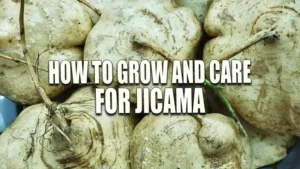



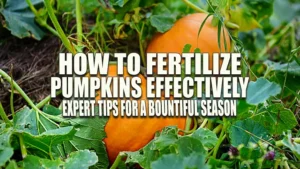


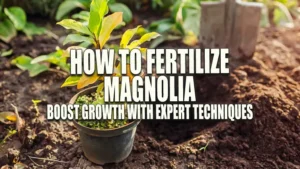

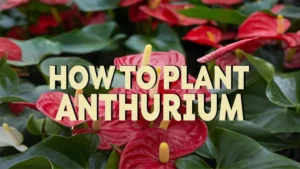
Leave your comment